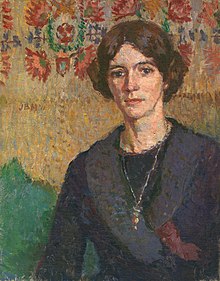
The author who brought toys to life
Toys, whether it is a doll, a car, or a stuffed animal, are our childhood companions. Do you remember hugging and cuddling them and hosting imaginary tea parties for them or perhaps even confiding your deepest secrets into their inanimate ears? As we grow up, however, newer toys and gizmos replace them. And so, a quintessential children’s classic, “The Velveteen Rabbit” by Margery Williams Bianco chronicles a stuffed rabbit’s quest to become ‘real’ and relevant to its owner.
Writing: A legacy from her father
Born on July 22, 1881 in London, Margery became a professional writer at the age of 19. Her father Robert, who was a distinguished scholar and barrister, inculcated a love for reading in her and honed her imagination. He would often regale her with stories, making it a point to vividly describe the characters and the world they inhabited. Life struck a cruel blow when Margery at the age of seven lost her beloved father. His demise had a profound impact on Margery and her writing. Most of her work revolved around the themes of death and loss. And even though she faced criticism for the sad undertones in her children’s books, Margery maintained that these sentiments were an undeniable part of the growing up process.
Getting published
Margery published her first novel, “The Late Returning” in 1902. It was aimed at an adult audience, but it did not do well. Her subsequent novels too failed to make a mark. In 1904, Margery married Francesco Bianco and changed her name to Margery Williams Bianco. After marriage, she moved to Turin, Italy. It was only at the age of 44 that she wrote “The Velveteen Rabbit”, which gained her fame and recognition.
“The Velveteen Rabbit”
Inspired by the innocence and playful imagination of her children, Margery wrote “The Velveteen Rabbit” after the end of World War I. The book was first publishes in 1922 and has been republished many times since.
In the story, a little boy receives a stuffed rabbit as a Christmas gift. The toy lives in the cupboard of the boy’s nursery, where it is looked down upon by the fancier toys who claim to be ‘real’. “What is real?” the rabbit asks another toy, the skin horse. The horse, who always speaks the truth, tells him that toys become ‘real’ through the love of their owner. “Does it hurt?” asks the Velveteen Rabbit. “Sometimes. When you are Real, you don’t mind being hurt,” says the horse.
Gradually, the bond between the Velveteen Rabbit and the boy grows stronger, and so does the Rabbit’s desire to become real so that he could be with his owner forever.
Although it’s a children’s story, the tale has undercurrents of poignancy and sentimentality, which are some of the trademarks of the author. It also ponders on deeper questions about existence and the meaning of life. Margery was influenced by mysticism while writing the story.
Margery also wrote many other novels and short stories in which she continued the theme of toys coming to life, conferring upon them the ability to express human emotions and feelings.
“Winterbound”
In her final years, Margery wrote books for young adults as well. Her most significant book for young adults, “Winterbound” tells the story of two teenage girls who are suddenly thrust with responsibilities of raising their younger siblings. The book was a runner-up for the Newbery Medal in 1937, and won the Newbery Honor, a prestigious literary citation, in 1971.
With England joining World War II, Margery began writing books on patriotism as well. Her last book “Forward Commandos!” is an inspirational wartime story, acknowledging the contribution of African-Americans to the war effort. However, Margery died before the war came to an end. As the book went on sale, she breathed her last on September 4, 1944 in New York.
OH REALLY?
- Margery’s book for young adults “Winterbound” was a runner-up for the Newbery Medal in 1937, and won the Newbery Honor, a prestigious literary citation, in 1971.
- Her daughter Pamela illustrated many of her works including “The Skin Horse” and “The Little Wooden Doll”.
- In 1914, Margery wrote a horror novel “The Thing in the Woods”. The book, about a werewolf in Pennsylvania in the U.S., is believed to have inspired future works on werewolves, including the renowned “The Dunwich Horror” by pulp fiction writer H.P. Lovecraft.
- Margery was inspired by Walter de la Mare, a poet, she regarded as her spiritual mentor.
Picture Credit : Google

